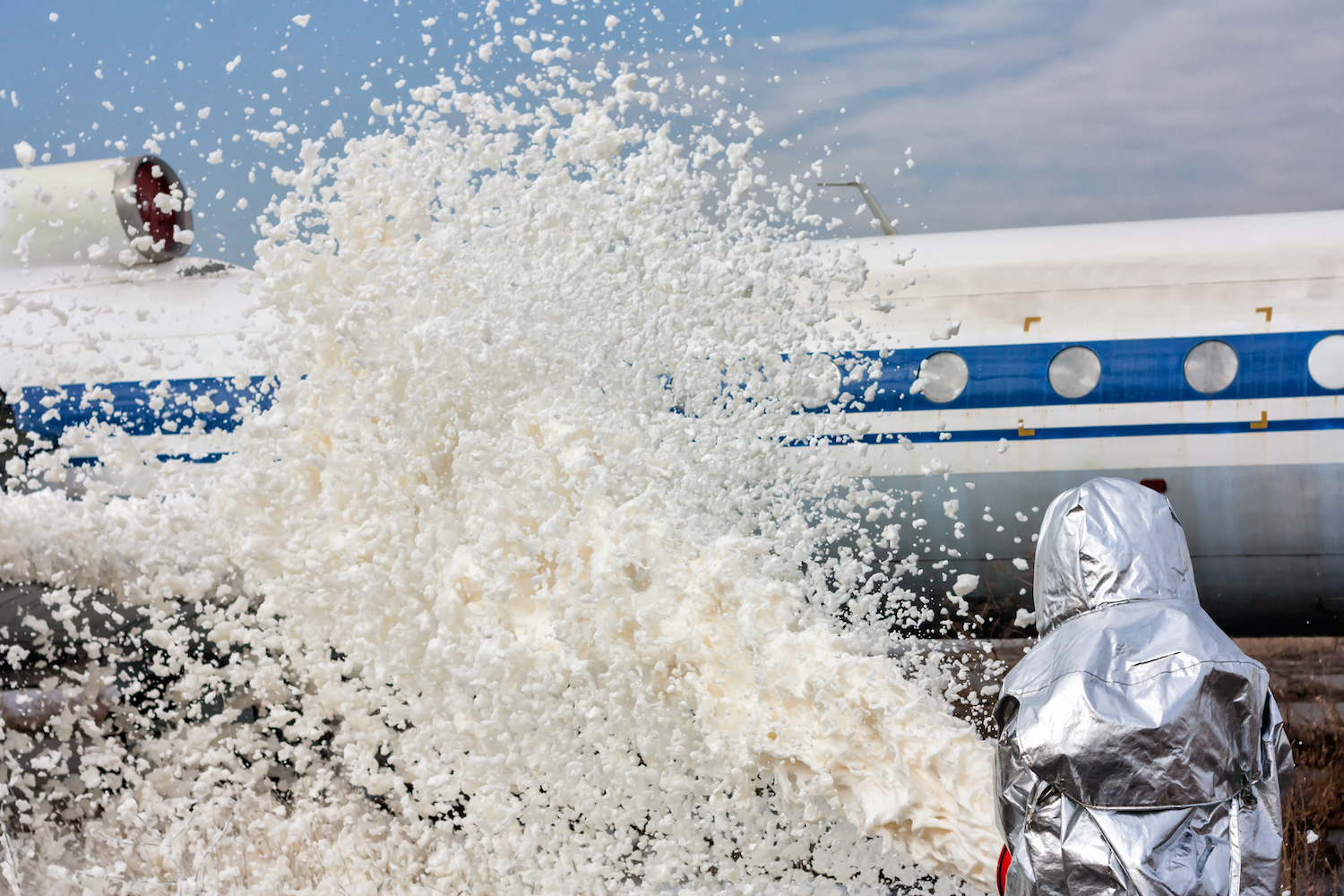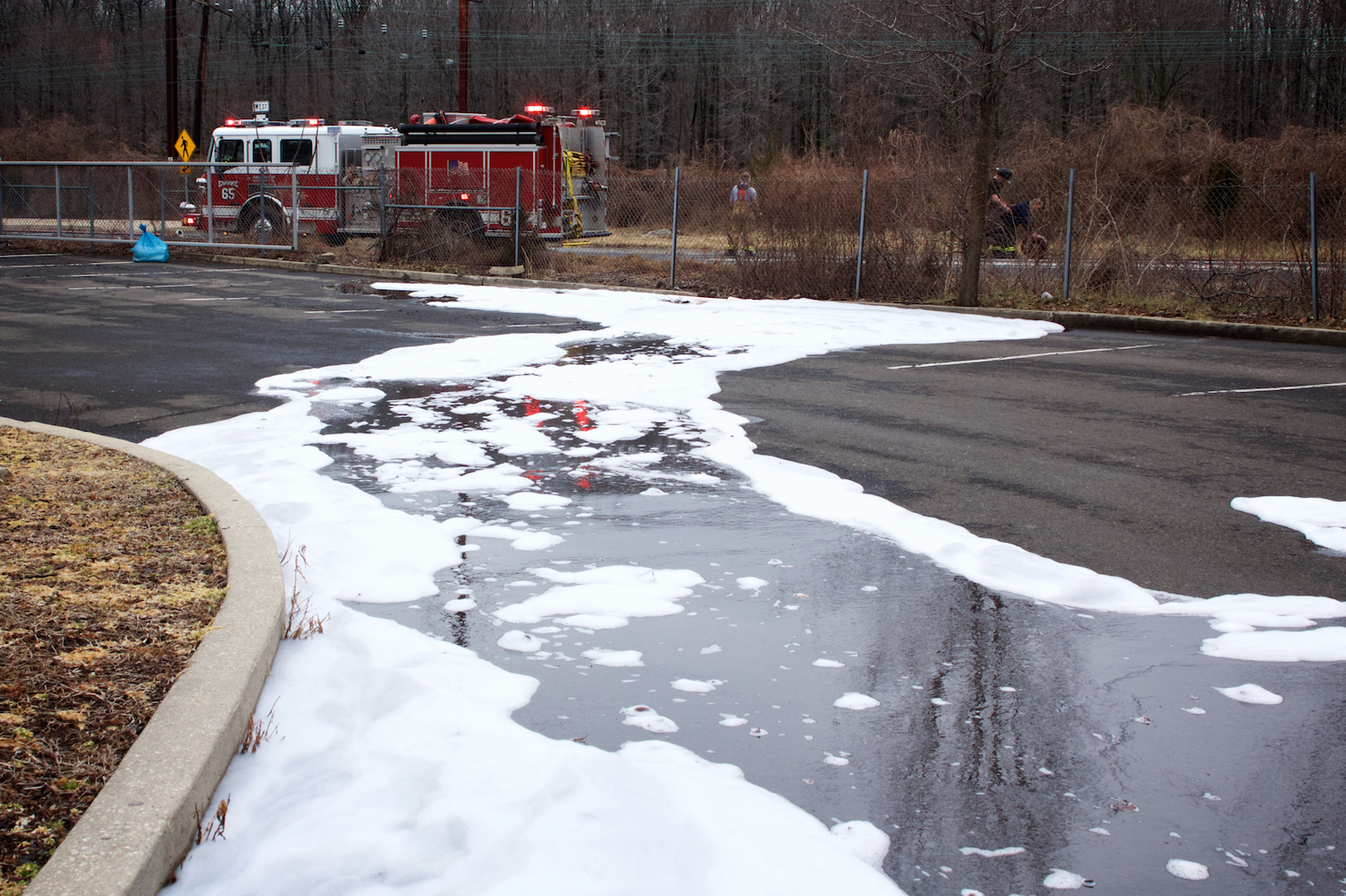What Are PFAS?

Perfluoroalkyl and polyfluoroalkyl substances, or PFAS, are synthetic chemicals found in many products, including food packaging, household cleaners and nonstick cookware, according to the U. S. Environmental Protection Agency (EPA).
It's an acronym you may have seen or heard of in recent years as studies on these very common chemicals have revealed their potentially negative health effects for humans and the environment. That's primarily because certain types of PFAS, such as perfluorooctanoic acid (PFOA) and perfluorooctane sulfonate (PFOS), don't break down in the environment or in the human body, and that may cause problems. [12 Worst Hormone-Disruption Chemicals & Their Health Effects]
History of PFAS
The first PFAS were invented in the 1930s and were the main ingredients in nonstick and waterproof coatings, according to the Interstate Technology & Regulatory Council (ITRC).
Development of these chemicals increased in the late 1960s after a deadly fire aboard a U.S. Navy aircraft carrier, the USS Forrestal, in 1967. The fire resulted from the accidental launch of a rocket into armed planes and loaded fuel tanks. This blaze nearly destroyed the ship and killed more than 130 people.
Soon after the tragic incident, manufacturers and scientists developed PFAS-containing aqueous film-forming foam (AFFF) — a foam mixture that rapidly extinguishes fire. The PFAS allow the mixture to spread, making it highly effective against petroleum fires and other flammable-liquid fires when mixed with water. PFAS-containing AFFF was subsequently installed on military and civilian ships, airplanes and airports.
Today, more than 3,000 synthetic chemicals are classified as PFAS. They have wide-ranging applications, such as in grease-resistant microwave-popcorn bags, carpets that resist stains, and pipes and wires that resist corrosion.
PFAS are a broad group of chemicals with numerous different properties and applications. Chemicals within the group are categorized by their chemical and physical properties, but calling them all PFAS has caused confusion in the scientific community and for the general public. For example, stating that PFAS can cause cancer is misleading, because only a very small handful of the thousands of PFAS have been linked with the development of cancer.
What are the concerns about PFAS?
Two classes of PFAS — PFOA and PFOS — have been extensively studied and have been linked with numerous adverse health effects in laboratory animals, according to the EPA.
PFOA has been detected in the blood of more than 98% of the population in the United States, according to the National Center for Biotechnology Information. The chemicals is mainly found in the environment around military bases and manufacturing facilities, where PFOA has seeped into local water supplies. The presence of PFOA in the blood has been associated with increased cholesterol and uric acid levels, which can lead to kidney stones and gout.
As of 2015, neither PFOA or PFOS chemicals are manufactured or used in the U.S., due to health and environmental concerns, according to the rules of the EPA's stewardship program for the substances, signed in 2006. But both chemicals persist in the environment because they don't degrade.
What are people doing about it?
The family of PFAS contains chemicals that are extremely useful across a wide variety of industries, with capabilities that some PFAS-industry experts say may not be achievable with alternative chemicals — a claim that environmental experts don't agree with.
For example, one industry expert (who asked to remain anonymous) told Live Science that firefighting foam that includes PFAS consistently performs better in tests compared with nonfluorinated (PFAS-free) firefighting foam. IPEN, a nonprofit environmental group based in Sweden, maintains that industry claim is false. The group released a scientific report in 2018 that described viable alternatives to PFAS-containing firefighting foam.
More than 50 commercial airports in major cities around the world and several of the biggest companies in the oil and gas industry have ceased using fluorinated firefighting foam and opted for alternatives, according to IPEN. In early May, 2019, the United Nations Environmental Programme hosted negotiations with more than 180 countries on banning toxic substances, including PFAS, Reuters reported. A few countries are seeking about 10 exemptions for certain applications of PFAS, such as in textiles and electronic devices. China is the only country seeking an exemption for PFAS-containing firefighting foam, Reuters reported.
PFAS also serve many less essential but convenient functions, such as lining microwave popcorn bags and pizza delivery boxes to help keep that yummy grease from leaking out. The practicality of PFAS for so many industries drives researchers and manufacturers to continue developing and learning about these chemicals.

However, due to the chemicals' persistence in the environment, drinking water can become contaminated with long-chain PFAS (eight or more carbon atoms in a molecule), a group that includes PFOA and PFOS. This is one of the primary concerns of human and animal exposure to the substances, according to the EPA.
So, people are trying to do something to fix the pollution problem. For example, a water treatment group in North Carolina is building a new facility that will contain large filters of granular activated carbon to suck PFAS out of contaminated drinking water, Chemical & Engineering News reported last month. The company's goal is to extract 90% of the PFAS from the water before delivering the utility to customers.
Other researchers are trying to find ways to completely destroy the PFAS once they have been filtered out of the water, in order to limit long-term waste, Chemical & Engineering News also reported. Efforts include incineration and electrochemical, thermal and ultrasonic treatments that could fully break down the molecules.
In early 2019, the EPA announced its Per- and Polyfluoroalkyl Substances (PFAS) Action Plan. This includes both short- and long-term actions to help officials better understand the chemicals and clean up PFOA and PFOS chemicals from contaminated water sources. The plan also outlines how the EPA aims to work with other agencies and manufacturers to research and monitor the development of new and existing PFAS, as well as how the agency intends to provide detailed information and risk communication to the public.
Researchers and manufacturers are also working to incorporate shorter-chain PFAS in place of the long-chained chemicals, to see if the chemicals can achieve the same useful properties, according to the ITRC. Short-chain PFAS may be less harmful and are less likely to accumulate in humans and animals, according to the EPA.
Additional resources:
- Watch a brief PFAS explainer video from Detroit Public TV.
- Read more about research on PFAS in drinking water.
- Learn more about what the U.S. federal government is doing to move toward PFAS regulation, from the U.S. Senate Committee on Environment and Public Works.
Correction: This article was updated on May 3, 2019 to clarify misleading information about the claim that PFAS-containing firefighting foam is more effective than non-fluorinated firefighting foam; and to add information about airports and oil and gas companies that have stopped using PFAS-containing firefighting foam; and to add information about the negotiation of a worldwide ban on PFAS. We regret our error and omissions.
Sign up for the Live Science daily newsletter now
Get the world’s most fascinating discoveries delivered straight to your inbox.

Rachel Ross is a science writer and editor focusing on astronomy, Earth science, physical science and math. She holds a Bachelor of Arts in Philosophy from the University of California Davis and a Master's degree in astronomy from James Cook University. She also has a certificate in science writing from Stanford University. Prior to becoming a science writer, Rachel worked at the Las Cumbres Observatory in California, where she specialized in education and outreach, supplemented with science research and telescope operations. While studying for her undergraduate degree, Rachel also taught an introduction to astronomy lab and worked with a research astronomer.










